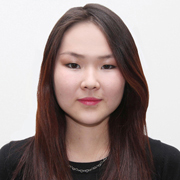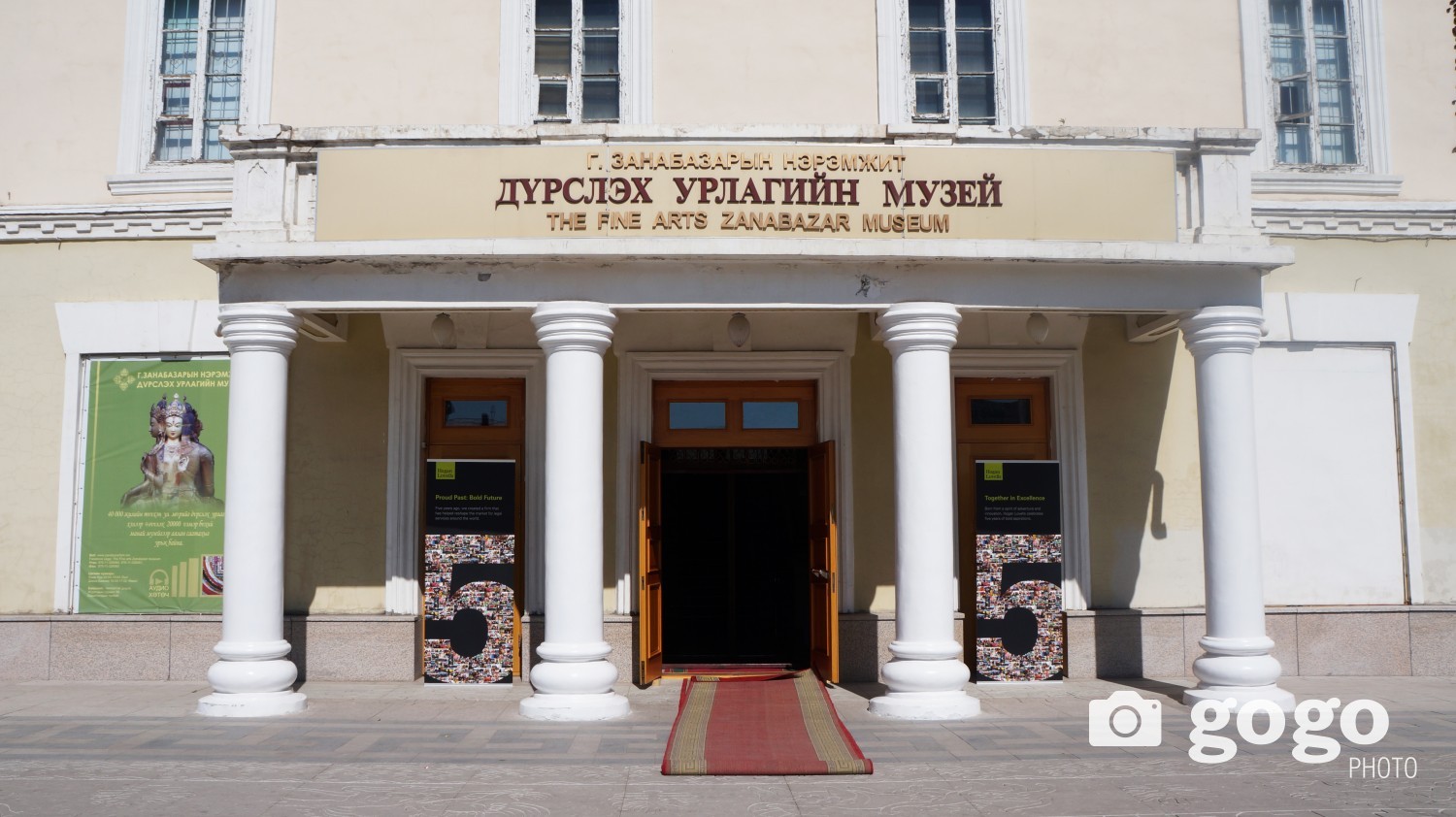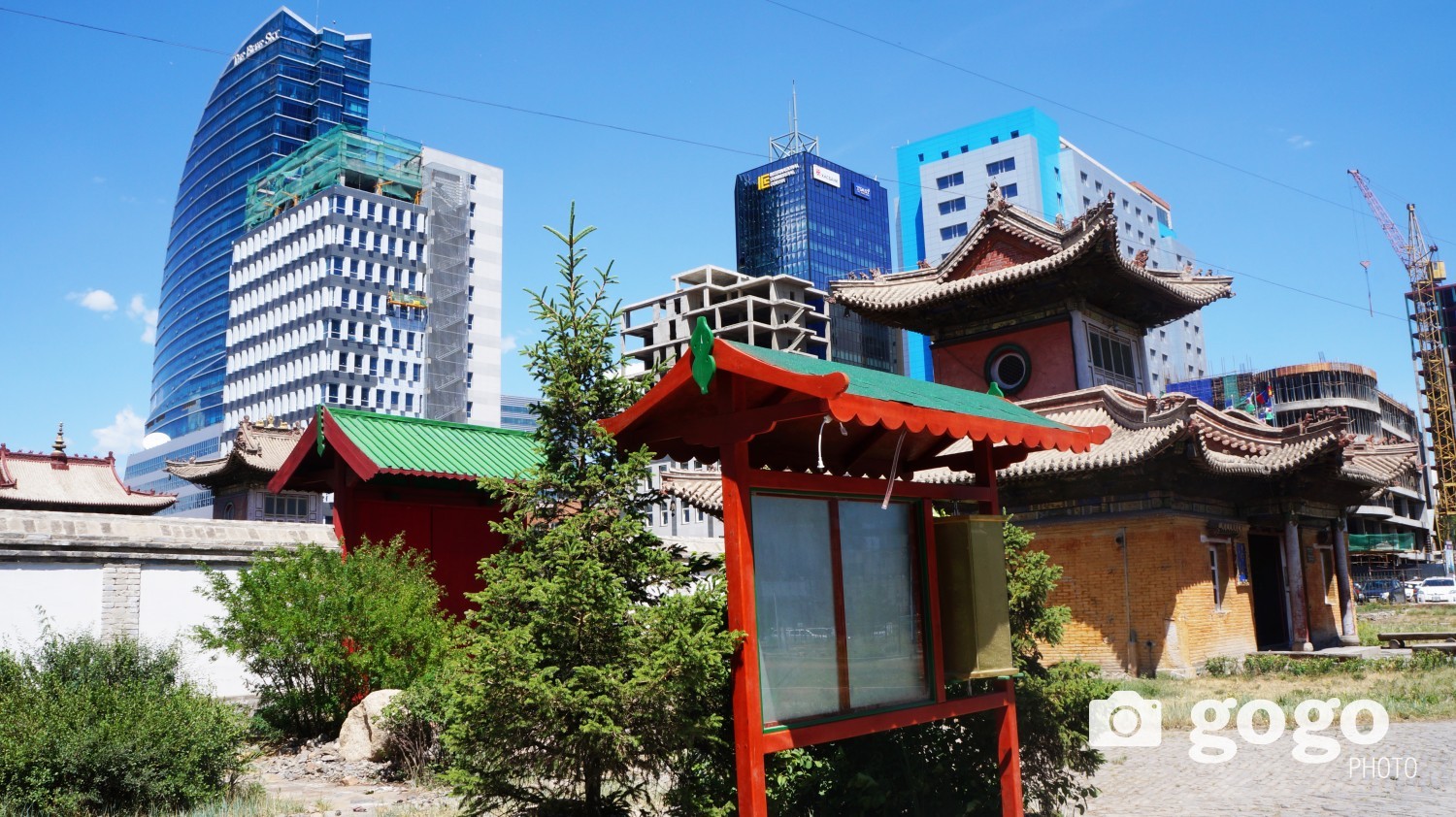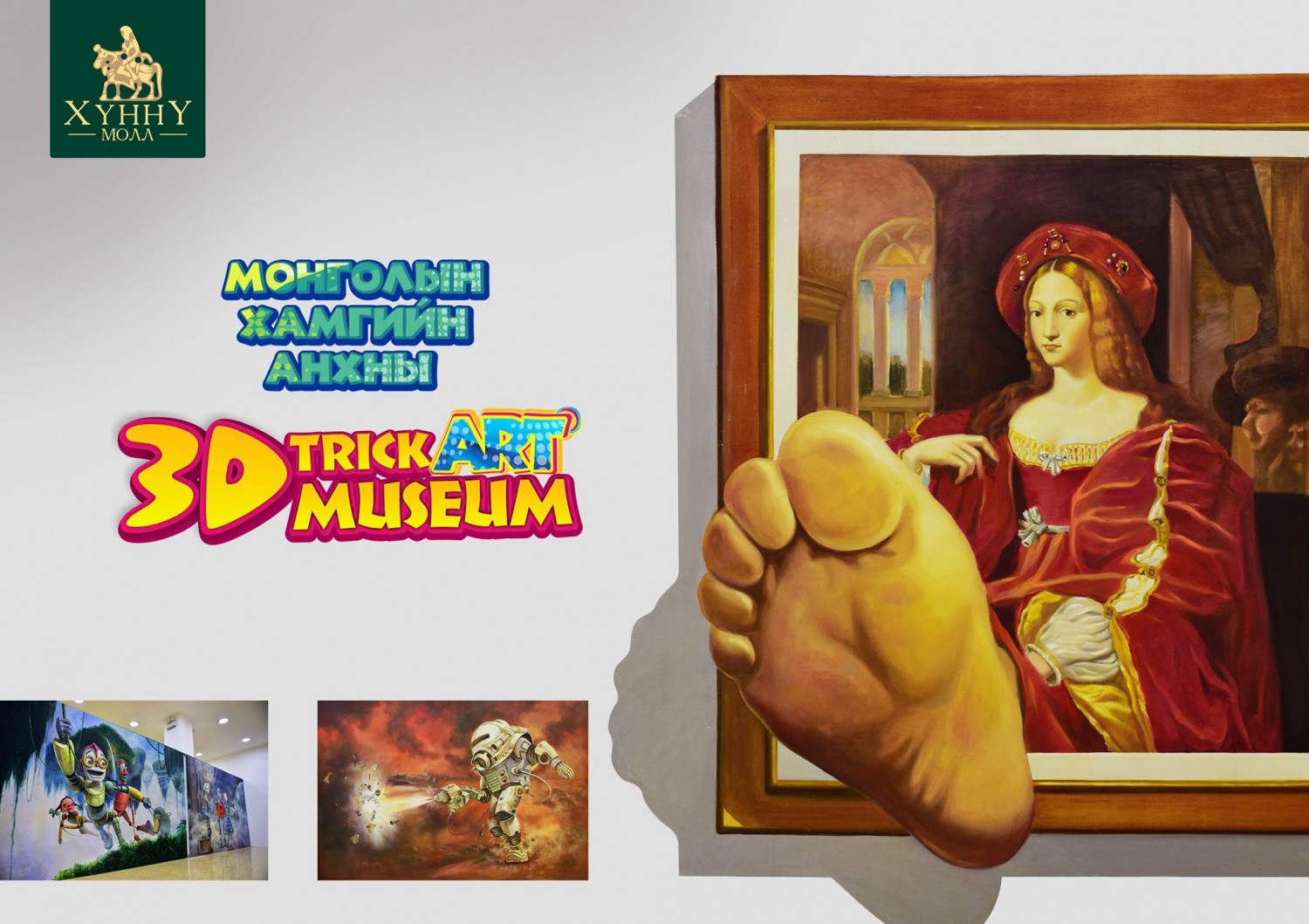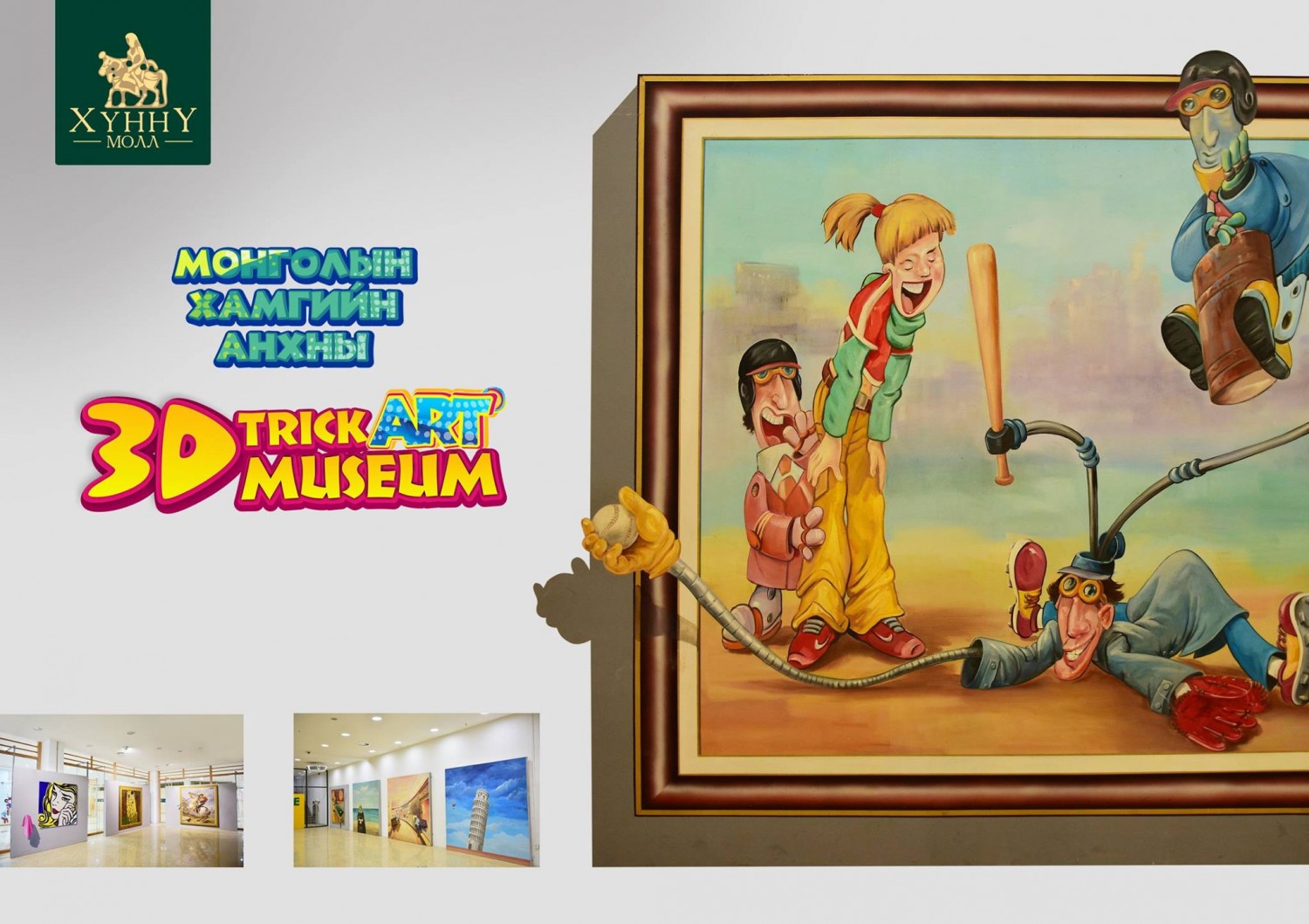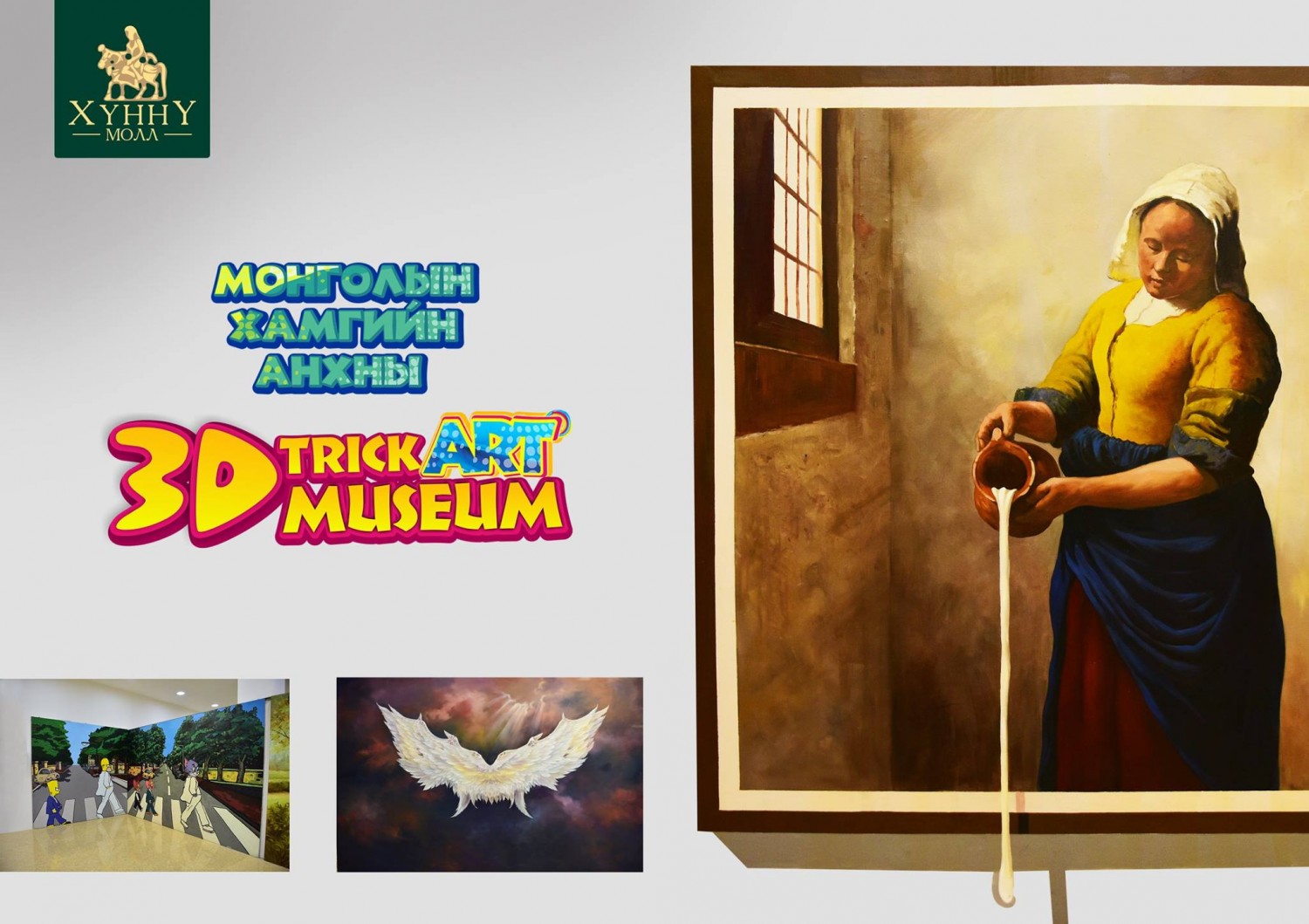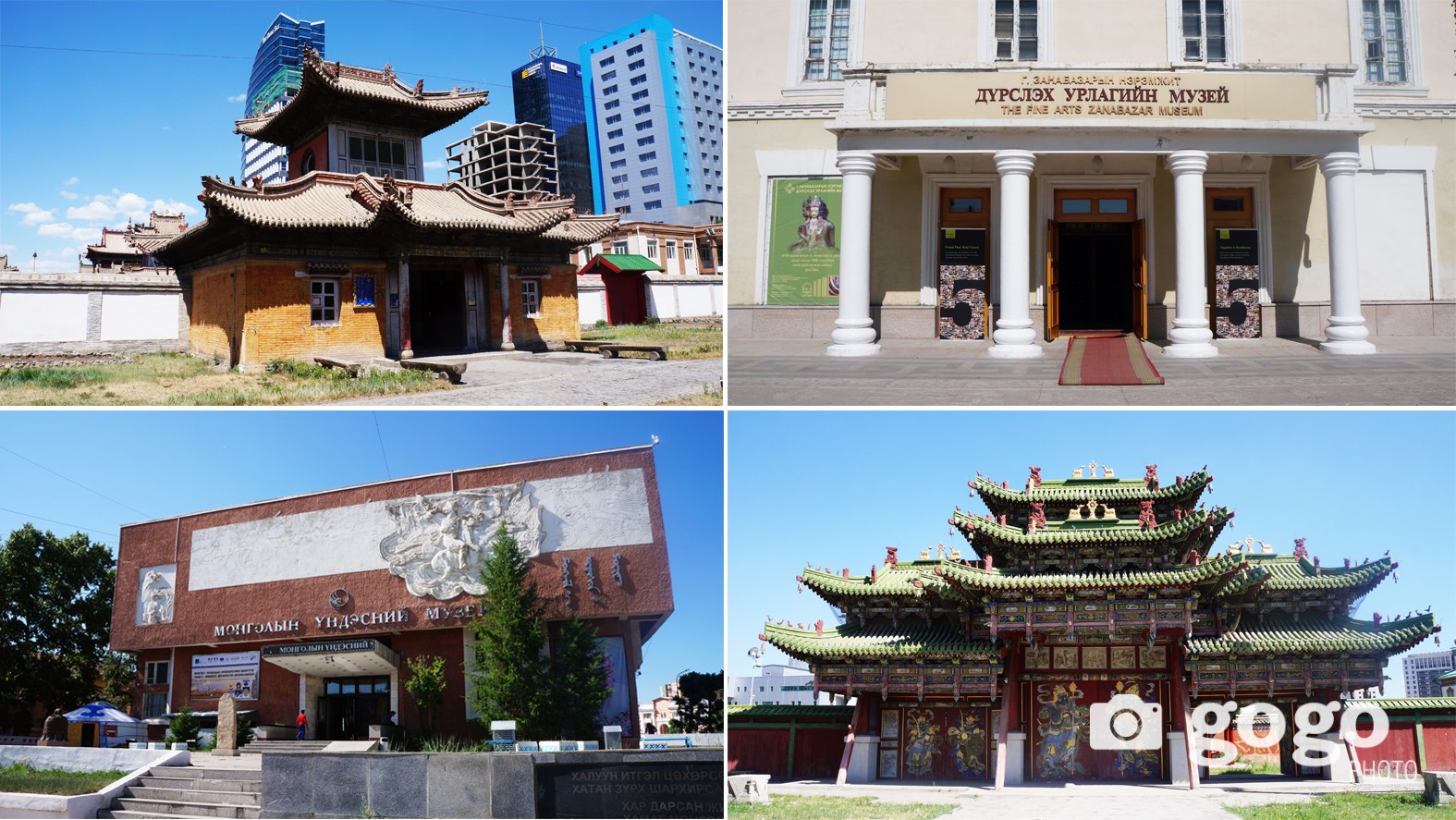
Ulaanbaatar city is developing and expanding day by day while preserving its old nomadic style. Few places in Ulaanbaatar where you can experience the pure cultural heritage from the ancient years are the museums. Here we are delivering you the information of several museums which is open all year round and Naadam Festival (July 11-15).
BOGD KHAAN MUSEUM
The Eighth Bogd Jivzandamba or Bogd Khan, played an undeniably important role in Mongolia`s religious and political history. Of Tibetan origin, he was identified in 1871 as a reincarnation of the Bogd Jivzandamba and sent to Mongolia to become its supreme Buddhist leader. Following the collapse of the Manchu Empire in 1911, he became absolute monarch of the newly-independent Mongolian state, continuing to rule as constitutional monarch from the time of the People`s Revolution in 1921 until his death in 1924. The Bogd Jivzandamba`s winter place, along with the prayer temples on its grounds, now serves as a museum preserving many of the objects associated with Bogd Khan and the period of his rule. It includes a significant collection of religious artworks commissioned by or presented to the king during his residence at the palace.
The complex was built between 1893 and 1903. On April 01, 1926, after Bogd Khaan`s death of illness in 1924, state museum office was created and it was dedicated to transmit the remaining property of the Bogd Khaan to public museum ownership.
Currently, the Bogd Khaan Palace Museum consists of seven Summer Prayer temples and the Winter Palace which was built in European style.
The collections of the museum include unique and valuable objects related to Mongolia`s political, religious and artistic history from the 170th to early 20th centuries including bronze castings, silk paintings and paper mache icons made by well-known artists and artisans of the period, among others the first Bogd Zanabazar and his school; as well as objects owned and used by the Eighth Bogd Jivzandamba and his wife Queen Dondogdulam, including royal clothing and equipment, gifts from domestic and foreign guests or representatives and items purchased by the king for his own diversion.
Working Hour: 09AM - 08PM and it closes during July 13 - 15
Inquiry: (+976-11) 342195
Address: 15th Khoroo, Khan-Uul District
Ticket: Adult - MNT 8,000, Student - MNT 3,000, Children - MNT 1,500, Photo - MNT 50,000, Video - MNT 70,000, Professional Video/Photo - MNT 400,000

Ulaanbaatar city is developing and expanding day by day while preserving its old nomadic style. Few places in Ulaanbaatar where you can experience the pure cultural heritage from the ancient years are the museums. Here we are delivering you the information of several museums which is open all year round and Naadam Festival (July 11-15).
BOGD KHAAN MUSEUM
The Eighth Bogd Jivzandamba or Bogd Khan, played an undeniably important role in Mongolia`s religious and political history. Of Tibetan origin, he was identified in 1871 as a reincarnation of the Bogd Jivzandamba and sent to Mongolia to become its supreme Buddhist leader. Following the collapse of the Manchu Empire in 1911, he became absolute monarch of the newly-independent Mongolian state, continuing to rule as constitutional monarch from the time of the People`s Revolution in 1921 until his death in 1924. The Bogd Jivzandamba`s winter place, along with the prayer temples on its grounds, now serves as a museum preserving many of the objects associated with Bogd Khan and the period of his rule. It includes a significant collection of religious artworks commissioned by or presented to the king during his residence at the palace.
The complex was built between 1893 and 1903. On April 01, 1926, after Bogd Khaan`s death of illness in 1924, state museum office was created and it was dedicated to transmit the remaining property of the Bogd Khaan to public museum ownership.
Currently, the Bogd Khaan Palace Museum consists of seven Summer Prayer temples and the Winter Palace which was built in European style.
The collections of the museum include unique and valuable objects related to Mongolia`s political, religious and artistic history from the 170th to early 20th centuries including bronze castings, silk paintings and paper mache icons made by well-known artists and artisans of the period, among others the first Bogd Zanabazar and his school; as well as objects owned and used by the Eighth Bogd Jivzandamba and his wife Queen Dondogdulam, including royal clothing and equipment, gifts from domestic and foreign guests or representatives and items purchased by the king for his own diversion.
Working Hour: 09AM - 08PM and it closes during July 13 - 15
Inquiry: (+976-11) 342195
Address: 15th Khoroo, Khan-Uul District
Ticket: Adult - MNT 8,000, Student - MNT 3,000, Children - MNT 1,500, Photo - MNT 50,000, Video - MNT 70,000, Professional Video/Photo - MNT 400,000
ZANABAZAR MUSEUMS
The Fine Arts G. Zanabazar Museum was founded in 1966. The museum is renowned for the works of G. Zanabazar (1635-1724), which include the statues of Sita Tara, the Five Dhayani Buddhas and the Bodhi Stupa. The Fine Arts Museum was named after Gombodorjiin Zanabazar in 1995. It has 12 exhibition galleries covering the arts from ancient civilizations up to the beginning of the 20th Century. Initially opened with over 300 exhibits, the museum rapidly enriched the number of its objects, with the modern arts becoming a separate division in 1989 as an Arts Gallery.
The museum displays the artistic works of Mongolian masters of the 18-20th Centuries, coral masks, thangkas, as well as the famous paintings of B.Sharav entitled “A Day in Mongolia” and “Airag feast”. The museum contains 13,000 objects. The exhibition hall regularly hosts the works of contemporary artists. The G.Zanabazar Museum has been successfully cooperating with UNESCO for the improvement of the preservation of priceless exhibits and for training of the museum staff.The tour of the museum begins at the 2nd floor, guiding through the following topics.
Ancient art
Such figures were typically painted using reddish-brown ochre, or engraved on the rock face using sharpened tools. The first artwork you can see in this room is a copy from the walls of a cave called Khoid Tsenxer (Khovd aimag, Mankhan soum). The original drawing was made 40-12 thousands years ago in the Early Stone Age.
Tangka Painting
Tanka, or Thangka, is a Tibetan term meaning Buddhist painting. This type of artwork started to spread throughout Mongolia in the mid-17th century, reaching its peak in the 19th and 20th centuries. Mongolian artists often traveled to Tibet and India for study religious fine arts, but upon their return to Mongolia created highly-skilled works of art following the strict religious canons, whilst absorbing the unique features of the traditional Mongol painting style.
Tsam masks and costumes
Tsam religious customs emerged in ancient India and were introduced in Mongolia by way of Tibet, becoming widespread during the 19th century. The Tsam was an ensemble performance depicting the ‘wrathful eight deities’, with specially trained dancers performing in costumes and masks representing the various deities.
Folk Art
For centuries the Mongolians have been utilizing their livestock raw materials, such as horns, bones, wool, hides, as well as materials found in the surrounding nature. Popular works of Mongolian handicraft art include embroidery, knit work, appliqué, needlework, felt, leather, bone and wood carving, steel and iron metalwork, gold and silver smith work, copper and brass hammering and papier-mâché from various ethnic groups.
Woodblock Printing
Originating in China, the woodblock printing technique spread throughout India, Tibet, Mongolia and Japan, following the dissemination of Buddhism. Woodblocks of various sizes, ranging from very small to a metre in diameter, would be carved to print various images from simple shapes to elaborated images of deities with multiple heads and arms.
Working hours: Daily 09PM - 06PM and it opens during Naadam Festival
Inquiry: (+976-11) 326060, (+976-11) 326061, (+976-11) 323986
Address: Juulchid Street, Chingeltei District
Ticket: Adult - MNT 8,000, Student - MNT 2,500, Children - MNT 1,000, Photo - MNT 45,000
ZANABAZAR MUSEUMS
The Fine Arts G. Zanabazar Museum was founded in 1966. The museum is renowned for the works of G. Zanabazar (1635-1724), which include the statues of Sita Tara, the Five Dhayani Buddhas and the Bodhi Stupa. The Fine Arts Museum was named after Gombodorjiin Zanabazar in 1995. It has 12 exhibition galleries covering the arts from ancient civilizations up to the beginning of the 20th Century. Initially opened with over 300 exhibits, the museum rapidly enriched the number of its objects, with the modern arts becoming a separate division in 1989 as an Arts Gallery.
The museum displays the artistic works of Mongolian masters of the 18-20th Centuries, coral masks, thangkas, as well as the famous paintings of B.Sharav entitled “A Day in Mongolia” and “Airag feast”. The museum contains 13,000 objects. The exhibition hall regularly hosts the works of contemporary artists. The G.Zanabazar Museum has been successfully cooperating with UNESCO for the improvement of the preservation of priceless exhibits and for training of the museum staff.The tour of the museum begins at the 2nd floor, guiding through the following topics.
Ancient art
Such figures were typically painted using reddish-brown ochre, or engraved on the rock face using sharpened tools. The first artwork you can see in this room is a copy from the walls of a cave called Khoid Tsenxer (Khovd aimag, Mankhan soum). The original drawing was made 40-12 thousands years ago in the Early Stone Age.
Tangka Painting
Tanka, or Thangka, is a Tibetan term meaning Buddhist painting. This type of artwork started to spread throughout Mongolia in the mid-17th century, reaching its peak in the 19th and 20th centuries. Mongolian artists often traveled to Tibet and India for study religious fine arts, but upon their return to Mongolia created highly-skilled works of art following the strict religious canons, whilst absorbing the unique features of the traditional Mongol painting style.
Tsam masks and costumes
Tsam religious customs emerged in ancient India and were introduced in Mongolia by way of Tibet, becoming widespread during the 19th century. The Tsam was an ensemble performance depicting the ‘wrathful eight deities’, with specially trained dancers performing in costumes and masks representing the various deities.
Folk Art
For centuries the Mongolians have been utilizing their livestock raw materials, such as horns, bones, wool, hides, as well as materials found in the surrounding nature. Popular works of Mongolian handicraft art include embroidery, knit work, appliqué, needlework, felt, leather, bone and wood carving, steel and iron metalwork, gold and silver smith work, copper and brass hammering and papier-mâché from various ethnic groups.
Woodblock Printing
Originating in China, the woodblock printing technique spread throughout India, Tibet, Mongolia and Japan, following the dissemination of Buddhism. Woodblocks of various sizes, ranging from very small to a metre in diameter, would be carved to print various images from simple shapes to elaborated images of deities with multiple heads and arms.
Working hours: Daily 09PM - 06PM and it opens during Naadam Festival
Inquiry: (+976-11) 326060, (+976-11) 326061, (+976-11) 323986
Address: Juulchid Street, Chingeltei District
Ticket: Adult - MNT 8,000, Student - MNT 2,500, Children - MNT 1,000, Photo - MNT 45,000
CHOIJIN LAMA MUSEUM
This temple museum is a hidden gem of architecture and history, smack in the middle of downtown Ulaanbaatar. It was the home of Luvsan Haidav Choijin Lama (‘Choijin’ is an honorary title given to some monks), the state oracle and brother of the Bogd Khan.
The complex consists of four temples originally and the complex construction was begun in 1904 and was completed in 1908. In 1938 the Stalinist government converted the complex into a museum.
The main temple features an 18th century gilt statue of Buddha Sakyamuni with a statue of Choijin Lama Luvsankhaidav on the Buddha's right and the embalmed corpse of Baldanchoimbolon on his left. In addition, the temple boasts a copious collection of religious instruments, thangka paintings, a copy of the 108-volume Ganjuur and hand-printed 226-volume Danjuur brought from Tibet by the Bogd Khan, and a collection of tsam dance masks.
The annex to the temple contains a heated ger and a central square in which Choijin Lama Luvsankhaidav performed rituals.
The Zuu Temple, dedicated to the Buddha Shakyamuni features papier-mache sculptures of Buddha in the past, present, and future. The 16 disciples of Buddha appear on the temple walls with four Maharantsa protectors shown sitting in caves on either side of the door.
The Yidam Temple was used as a place of prayer by Choijin Lama Luvsankhaidav, and therefore is closed to the public. In its center is a gilt bronze sculpture of one of the 84 Indian yogis, or Mahasiddha. Also depicted are the tantric gods Kalacakra, Mahamaya, Vajradhara and others with their shakti or consorts in postures of meditation that symbolize power and strength.
The fourth temple, the temple of Amgalan or peace, is dedicated to the first Mongolian reincarnation of Bogd Jivzandamba, Undur Gegeen Zanabazar.
Working hours: Daily 09AM - 07.30PM and it opens during Naadam Festival
Address: Behind of Shangri-La hotel, Genden Street, Sukhbaatar district
Inquiry: (+976 - 11) 324788
Ticket: Adult - MNT 8,000, Student - MNT 3,000, Child - MNT 1,500, Photo - MNT 50,000, Video - MNT 100,000 and audio guide MNT 3,000.
CHOIJIN LAMA MUSEUM
This temple museum is a hidden gem of architecture and history, smack in the middle of downtown Ulaanbaatar. It was the home of Luvsan Haidav Choijin Lama (‘Choijin’ is an honorary title given to some monks), the state oracle and brother of the Bogd Khan.
The complex consists of four temples originally and the complex construction was begun in 1904 and was completed in 1908. In 1938 the Stalinist government converted the complex into a museum.
The main temple features an 18th century gilt statue of Buddha Sakyamuni with a statue of Choijin Lama Luvsankhaidav on the Buddha's right and the embalmed corpse of Baldanchoimbolon on his left. In addition, the temple boasts a copious collection of religious instruments, thangka paintings, a copy of the 108-volume Ganjuur and hand-printed 226-volume Danjuur brought from Tibet by the Bogd Khan, and a collection of tsam dance masks.
The annex to the temple contains a heated ger and a central square in which Choijin Lama Luvsankhaidav performed rituals.
The Zuu Temple, dedicated to the Buddha Shakyamuni features papier-mache sculptures of Buddha in the past, present, and future. The 16 disciples of Buddha appear on the temple walls with four Maharantsa protectors shown sitting in caves on either side of the door.
The Yidam Temple was used as a place of prayer by Choijin Lama Luvsankhaidav, and therefore is closed to the public. In its center is a gilt bronze sculpture of one of the 84 Indian yogis, or Mahasiddha. Also depicted are the tantric gods Kalacakra, Mahamaya, Vajradhara and others with their shakti or consorts in postures of meditation that symbolize power and strength.
The fourth temple, the temple of Amgalan or peace, is dedicated to the first Mongolian reincarnation of Bogd Jivzandamba, Undur Gegeen Zanabazar.
Working hours: Daily 09AM - 07.30PM and it opens during Naadam Festival
Address: Behind of Shangri-La hotel, Genden Street, Sukhbaatar district
Inquiry: (+976 - 11) 324788
Ticket: Adult - MNT 8,000, Student - MNT 3,000, Child - MNT 1,500, Photo - MNT 50,000, Video - MNT 100,000 and audio guide MNT 3,000.
NATIONAL MUSEUM OF MONGOLIA
The National Museum of Mongolia is one of the located in the capital Ulaanbaatar. The National Museum of Mongolia is a cultural, scientific, and educational organization, which is responsible for the collection, conservation and interpretation of the objects under its curation.
The first museum in Mongolia, which was called the Mongolian National Museum (now the Mongolian Natural History Museum), was established in 1924 and became the basis for other museums, including the National Museum of Mongolian History. Russian scholars, such as Pyotr Kozlov, V. I. Lisovskii, A. D. Simukov, and the American researcher Roy Chapman Andrews contributed to the museum's early collections and exhibits.
The modern National Museum of Mongolian History was established after the merger of the historical, archaeological and ethnographical departments of the State Central Museum and the Museum of the Revolution in 1991. It is now located in a facility built for the Museum of the Revolution, which was founded in 1971. The National Museum of Mongolia is currently recognized as one of the leading museums in Mongolia. The significant responsibility for preserving Mongolian cultural heritage therefore lies with the museum. It is also responsible for developing museological guidelines for museums in the nation.
Exhibitions cover prehistory, pre-Mongol Empire history, Mongol Empire, Mongolia during Qing rule, ethnography and traditional life, and twentieth-century history. The ethnographic collection has significant displays of the traditional dress of various Mongolian ethnic groups and snuff bottles. Most exhibits have labels in both Mongolian and English. The museum publishes one or more issues of its in-house journal each year, with articles in Mongolian and foreign languages, including Russian and English.
Working hours: Daily 08AM - 08.30PM and it opens during Naadam Festival
Address: West side of the Government House, Juulchin Street, Chingeltei District
Inquiry: (+976 - 11) 326802, (+976? 70110911
Ticket: Adult - MNT 8,000, Student - MNT 2,500, Child - MNT 1,500, Photo - MNT 10,000
NATIONAL MUSEUM OF MONGOLIA
The National Museum of Mongolia is one of the located in the capital Ulaanbaatar. The National Museum of Mongolia is a cultural, scientific, and educational organization, which is responsible for the collection, conservation and interpretation of the objects under its curation.
The first museum in Mongolia, which was called the Mongolian National Museum (now the Mongolian Natural History Museum), was established in 1924 and became the basis for other museums, including the National Museum of Mongolian History. Russian scholars, such as Pyotr Kozlov, V. I. Lisovskii, A. D. Simukov, and the American researcher Roy Chapman Andrews contributed to the museum's early collections and exhibits.
The modern National Museum of Mongolian History was established after the merger of the historical, archaeological and ethnographical departments of the State Central Museum and the Museum of the Revolution in 1991. It is now located in a facility built for the Museum of the Revolution, which was founded in 1971. The National Museum of Mongolia is currently recognized as one of the leading museums in Mongolia. The significant responsibility for preserving Mongolian cultural heritage therefore lies with the museum. It is also responsible for developing museological guidelines for museums in the nation.
Exhibitions cover prehistory, pre-Mongol Empire history, Mongol Empire, Mongolia during Qing rule, ethnography and traditional life, and twentieth-century history. The ethnographic collection has significant displays of the traditional dress of various Mongolian ethnic groups and snuff bottles. Most exhibits have labels in both Mongolian and English. The museum publishes one or more issues of its in-house journal each year, with articles in Mongolian and foreign languages, including Russian and English.
Working hours: Daily 08AM - 08.30PM and it opens during Naadam Festival
Address: West side of the Government House, Juulchin Street, Chingeltei District
Inquiry: (+976 - 11) 326802, (+976? 70110911
Ticket: Adult - MNT 8,000, Student - MNT 2,500, Child - MNT 1,500, Photo - MNT 10,000
DINOSAUR MUSEUM
Mongolia is a country of dinosaurs and has a rich treasury of their remains. Central Museum of Mongolian Dinosaurs enables you to see the Cretaceous period paleontology findings and other priceless findings.
The centerpiece of the museum is a 3m-tall, 5-tonne, flesh eating Tyrannosaurs Bataar, a cousin of T-Rex. This particular specimen made international headlines in 2012 when it sold for over USD 1 million at an auction in Texas. The Government of Mongolia protested that the fossil had been illegally smuggled out of Mongolia and demanded its return. The legal battle ended when a US judge ruled in favor of Mongolia.
The museum also includes examples of Velociraptors, Protoceratops and a nest of Oviraptor eggs.
Interestingly, museum exhibits are able to be presented in 3D, using mobile application named "Mongolian dinosaur museum". Also, English speaking guide is available.
Please note that only one hall is open to the public now and the other halls are being repaired. However, it is a must-see place if you are into dinosaurs.
Working hours: Daily 10AM - 7PM (Summer timetable from May 15 - Sep 15)
Daily 9AM - 6PM (Winter timetable from Sep 16 - May 14)
Address: Former Lenin Museum, Independence square, 5th khoroo, Chingeltei district
Inquiry: (+976 - 11) 7000171
Ticket: Adult - MNT 3,000, Student - MNT 1,000, Child - MNT 500, Photo - MNT 5,000
DINOSAUR MUSEUM
Mongolia is a country of dinosaurs and has a rich treasury of their remains. Central Museum of Mongolian Dinosaurs enables you to see the Cretaceous period paleontology findings and other priceless findings.
The centerpiece of the museum is a 3m-tall, 5-tonne, flesh eating Tyrannosaurs Bataar, a cousin of T-Rex. This particular specimen made international headlines in 2012 when it sold for over USD 1 million at an auction in Texas. The Government of Mongolia protested that the fossil had been illegally smuggled out of Mongolia and demanded its return. The legal battle ended when a US judge ruled in favor of Mongolia.
The museum also includes examples of Velociraptors, Protoceratops and a nest of Oviraptor eggs.
Interestingly, museum exhibits are able to be presented in 3D, using mobile application named "Mongolian dinosaur museum". Also, English speaking guide is available.
Please note that only one hall is open to the public now and the other halls are being repaired. However, it is a must-see place if you are into dinosaurs.
Working hours: Daily 10AM - 7PM (Summer timetable from May 15 - Sep 15)
Daily 9AM - 6PM (Winter timetable from Sep 16 - May 14)
Address: Former Lenin Museum, Independence square, 5th khoroo, Chingeltei district
Inquiry: (+976 - 11) 7000171
Ticket: Adult - MNT 3,000, Student - MNT 1,000, Child - MNT 500, Photo - MNT 5,000
3D TRICK ART MUSEUM
Above four museums are the biggest and the most popular in Ulaanbaatar city.
Finally, we are offering you 3D Trick Art Museum which is located inside the Hunnu Mall and opens from 11AM to 10PM. Besides you can make a visit to Mongolian Dinosaur Exhibition at Hunnu Mall as well. Ticket for the 3D Trick Art Museum is MNT 5000 while ticket for Mongolian Dinosaur Exhibition is MNT 3,000 for adult and MNT 1,500 for children.
Hunnu Mall will open during Naadam festival from 11AM to 10PM.
Inquiry: (+976 - 11) 77112222, (+976) 70212222
Address: In front of Viva city town, on the way to Chinggis Khaan International Airport
References: http://wikipedia.org, http://zanabazarfam.mn
3D TRICK ART MUSEUM
Above four museums are the biggest and the most popular in Ulaanbaatar city.
Finally, we are offering you 3D Trick Art Museum which is located inside the Hunnu Mall and opens from 11AM to 10PM. Besides you can make a visit to Mongolian Dinosaur Exhibition at Hunnu Mall as well. Ticket for the 3D Trick Art Museum is MNT 5000 while ticket for Mongolian Dinosaur Exhibition is MNT 3,000 for adult and MNT 1,500 for children.
Hunnu Mall will open during Naadam festival from 11AM to 10PM.
Inquiry: (+976 - 11) 77112222, (+976) 70212222
Address: In front of Viva city town, on the way to Chinggis Khaan International Airport
References: http://wikipedia.org, http://zanabazarfam.mn



